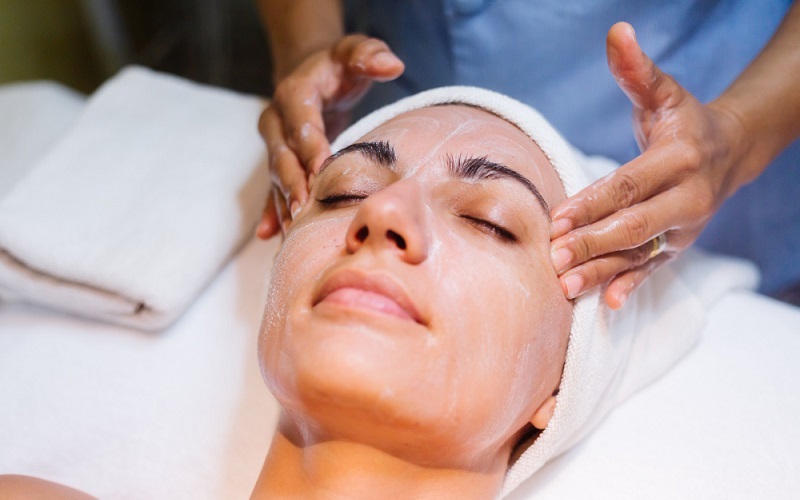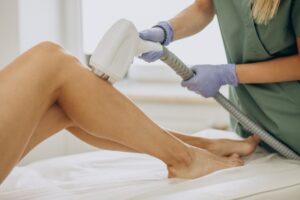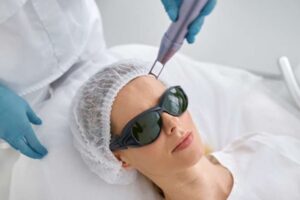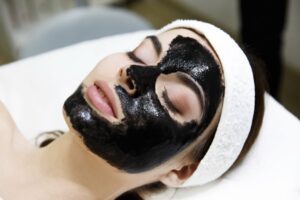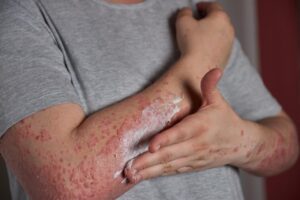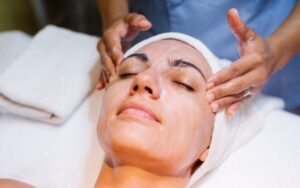
Chemical peeling or chemical rejuvenation is a procedure where a chemical agent or combination of agents of defined strength is applied to the skin, causing controlled destruction of the layers of the skin. This is followed by regeneration and remodelling of the skin with the improvement of texture and surface abnormalities.
The objective of chemical peeling is to cause controlled destruction at the required depth, followed by remodelling without scarring.
It can accelerate the natural processes of exfoliation or destroy the epidermis and dermis, essentially by protein coagulation or lysis. The effect of any peel reaches the dermis, directly or indirectly and to varying depths, depending on the molecule or molecules used and the application procedure.
- Depending on the depth of the peel
- According to their chemical action and properties

Depending on the depth of the peel:
- Very superficial peel
- Superficial peel
- Medium depth peel
- Deep peels
According to their chemical action and properties.:
- Alpha hydroxy acids (AHA): glycolic, lactic, malic, oxalic, tartaric and citric acid
- Beta hydroxy acids (BHA): Salyscilic acid
Procedure
After determining the skin conditions that need attention, the doctor will choose the best chemical agent for the chemical peeling procedure. The doctor may advise you to “prepare” your skin prior to the chemical peel treatment depending on the indication and depth of the chemical peel procedure. This is often not required for superficial peels.
While the doctor applies the selected chemical peeling solution to your face, you will feel stung. However, it generally does not cause a great deal of pain. Always communicate with your doctor if the pain is too overwhelming for you.
After the procedure, it is common to have redness, swelling and some irritation to the treated skin. The use of post-care creams given by your dermatologist should help to reduce these effects. In general, one should avoid overexposing to sun and heat, as well as avoid using harsh skincare products after chemical peel treatment. Follow the post-care advice given by your doctor and your skin condition should improve after the treatment.
A chemical peel is generally NOT recommended for individuals with active skin infection, skin disease, sunburned skin, active herpes infection, Nursing or pregnant ladies.
Post-peel care
Patients should be informed that after a peel, erythema and desquamation will occur, this may last for 1–3 days
- A non-soap cleanser should be used to wash the face
- Irritant cleansers such as Dettol, scrubs and loofahs should be strictly avoided for a week
- If there is crusting, a topical antibacterial ointment should be used to prevent infection
- A moisturizer should be used when the skin is peeling and it should not be picked
- Broad-spectrum sunscreens should be liberally used and must be applied every 3 hourly for at least a week
- No facial procedures like steaming, scrubbing, waxing, bleaching or facials should be performed in the first week after the peel
- The patient should also be advised against getting into chlorinated water for at least 72 hours to prevent PIH.
Chemical peels are used for
- Skin rejuvenation
- Pigmentation
- Acne vulgaris
- Wrinkles
- Acne scars
- Photodamaged skin
- Dull skin
- Uneven skin tone
Benefits of chemical peeling
- Exfoliation
- Smoother skin
- Tighter skin
- Brighter skin
- Decreased pigmentation
- Improved skin tone
- Clearer skin
Side effects
Common side effects are temporary, and include redness, dryness, stinging or burning, and slight swelling. They can however, have more serious risks and dangerous side effects that can be permanent. These include Darkening or lightening of the skin color, Scarring, Infections. So, its always advisable to get your chemical peeling done by a dermatologist.
What to expect after chemical peeling
Recovery time varies depending on which chemical peel you received. On an average it will take about four to seven days. Your skin may temporarily be lighter or darker. You can have redness, swelling in the first 3-4 days. You may also see crusts and brown blotches before revealing new skin.
During recovery, follow your doctor’s postop instructions faithfully. They’ll give you specific instructions for how often to wash your face and moisturize, and which products you should use to do so. Try to stay out of the sun until your skin has healed, and avoid using makeup or other cosmetics until your dermatologist gives you the go-ahead. You can use ice packs for 20 minutes at a time, or a cool fan, to help relieve discomfort at home.

